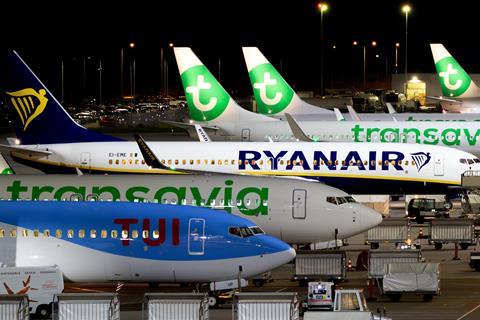Boeing believes around 90% of the current European fleet will be replaced over the next two decades as high renewal requirements drive future aircraft demand in the region.
In its latest Commercial Market Outlook, Boeing estimates demand for 8,700 new aircraft in the European aviation market between now and 2040. That outlook is set against expected average economic growth of 1.4% annually, and average annual passenger traffic growth of 3.1%, in the region across the next two decades.

”Europe remains in many cases the most-stable area for demand, because much of the demand for new deliveries is coming from replacement [needs],” said Darren Hulst, Boeing vice-president, commercial marketing during a media briefing covering the European segment of its recently released Commercial Market Outlook in London.
”Over half of the aircraft we see delivering into the European market over the next 20 years will be for replacing aircraft in the market, and about 40-45% of the deliveries will be for airlines to continue on their growth path. What that means is, over the course of the next 20 years only about 10% of the fleet that existed last year will be flying in 20 years.”
That outstrips the global replacement share of 80% for the industry as a whole, set out in Boeing’s Commercial Market Outlook.
“There are over 700 older aircraft in the European fleet that will be likely removed and replaced in the near term – about 600 single-aisle and about 150 widebody aircraft,” adds Hulst. ”Some remain in service, but a lot of them [are] temporarily parked and ultimately they become the first candidates for replacement.”
While total renewal numbers have not been impacted by the crisis, the pandemic has impacted timing. ”We have seen an acceleration of aircraft that would have been replaced… mid-decade are being pulled forward to being replaced near-term, especially the ones that are least efficient or less versatile in the fleet,” he says.
”The thing that also potentially accelerates some of those replacements, especially in the medium term, is the sustainability focus. Not only do you have the economics of the aircraft and the network fit, but also an incentive to be more sustainable,” he adds.
Boeing sees around four-fifths of the new aircraft for Europe being single-aisle, in part reflecting the strength of both budget operators and point-to-point traffic in the region.
”European travel is significantly more point-to-point in nature when compared to North America,” Hulst notes. “That means a lot of low-cost carrier networks and a lot of demand that exists to capture leisure traffic, which is significantly more reliant on point-to-point than we have in the United States.” He also points to the way network carriers in the region have developed low-cost units to compete in low-cost markets and to help feed their global networks.
”As a result… the single-aisle market becomes the most-resilient and the most-important part in building back [after the pandemic],” he says.
Boeing estimates that about 40% of global demand for single-aisle jets will come from low-cost carriers. “You could argue in the European space that number would be slightly higher because of the prevalence of the point-to-point travel that exists in the European market,” Hulst says.
Within the single-aisle market, Hulst believes the strongest demand will be in the mid-size sector.
“While over the course of the last decade airlines have bought a progressively higher share of large single-aisle aircraft, the vast majority of the fleet that needs to be replaced is the mid-size of the single-aisle market. Those aircraft are the most versatile, the most active and ultimately serve the most purposes across an airline’s network.”
Boeing projects demand for 1,545 new widebodies, including freighters, in Europe by 2040.
”From a long-term perspective the main driver of air travel remains – and will remain – the level of economic activity,” Hulst adds. “The key thing to note is [that] the health of the European economy is strong enough to help pull aviation out of the challenge, and in many ways it will lead the aviation market.
He says Europe’s GDP will regain pre-virus levels during the current quarter. “Household savings – pent-up savings – exist in the market for passengers to spend on air travel. And consumer confidence is at a high level.”


























